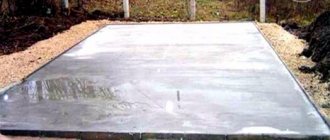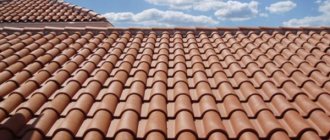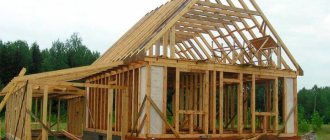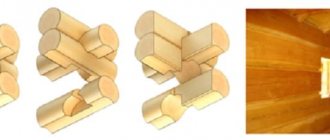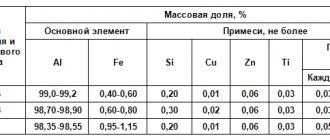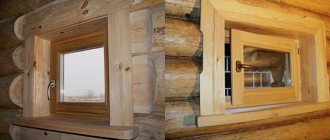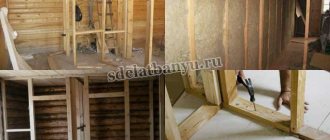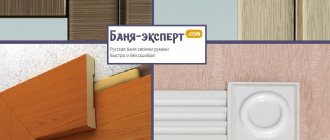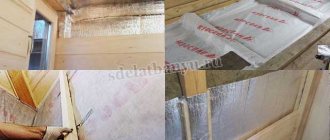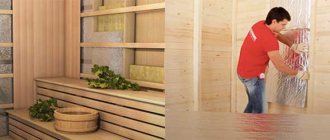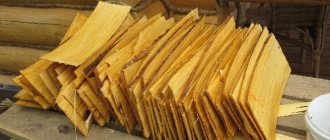The foundation is the fundamental structure, the quality of which determines the geometric, technical and operational characteristics of the structure being built. Due to the specific nature of the hardening process, it is not advisable to pour concrete and reinforced concrete foundations in winter in order to avoid their deformation and premature destruction. Sub-zero thermometer readings significantly limit construction in our latitudes. However, if necessary, pouring concrete at subzero temperatures can still be successfully carried out if the right method is chosen and the technology is followed with precision.
The process of strengthening concrete structures
To determine to what temperature concrete can be poured, it is necessary to first, at least superficially, consider the features of the process of gaining strength by a monolith. The reaction begins to occur between cement/water at the moment of mixing. In the first hours, the concrete is still fluid and can be worked with, but after several hours it begins to harden, becoming first thicker and then completely hard.
The process of interaction between water and cement is called hydration. Hydration takes place in two stages: first the mixture sets, then hardens. Aluminates are involved in setting, and needle-shaped crystals appear, interconnected. After 6-10 hours, these crystals become a kind of frame, skeleton. The concrete begins to harden.
The entire setting process can take from 20 minutes to 20 hours, which directly depends on the ambient temperature. The process takes the longest in the cold season - when it’s about 0 outside, the concrete begins to set in 6-10 hours, the stage lasts 15-20 hours.
During the hardening process, clinker minerals react with the water in solution, and a silicate structure is gradually formed. The reaction provokes the appearance of small crystals, which combine into a unique finely porous structure. This is concrete, which within 28 days already gains brand strength and durability without changing its shape and structure.
The optimal temperature value for the hardening stage is also +20 degrees, humidity – up to 100%.
Deviations from the parameters significantly affect the strength: complete maturation of the monolith lasts several years (but the set of design strength must be completed 28 days after pouring), the hardening rate changes over time.
Covering and insulation
These are the simplest ways to protect a freshly poured reinforced concrete foundation from hypothermia without heating in the fall or early spring, when it’s 3-7 °C outside during the day and frosts occur on the ground at night. Insulation is implemented as follows:
- First you need to pour the solution into the formwork and give it time to set.
- At night, cover the concrete strip with a 20 cm thick layer of wet sawdust and cover it with a film at least 1.5 m wide.
- Place dry sawdust on top of the film to a height of 50 cm.
The point is that wet sawdust will prevent the monolith from drying out, and dry sawdust will protect it from the cold. In addition, the structure will warm up due to its own heat generated during the first stage of hydration. For simpler foundations, for example, for fence posts, it is enough to cover them with dry leaves and also cover them with polyethylene.
Monolithic houses, built using new technologies, are initially insulated on both sides with foam plastic, which is also formwork, as is done in the photo. Here it is enough to cover the concrete with insulation on top so that it can easily withstand night frosts.
The influence of negative temperature on concrete hardening
As mentioned above, the rate of hydration is very dependent on the ambient temperature. Thus, when decreasing from +20 to +5 degrees, hardening occurs on average 5 times slower. Further, the lower the temperature, the slower the reaction. When the temperature reaches sub-zero, hydration stops altogether (the water simply freezes).
At the moment of freezing, water tends to expand, which causes an increase in pressure inside the concrete solution and destruction of already formed crystal bonds. The structure of concrete is destroyed and cannot be restored in the future. In addition, ice that appears in the mixture can envelop large fillers, destroying adhesion to cement. All this significantly worsens the solidity of the structure and reduces strength.
When the water thaws, hardening continues, but the structure of the concrete is already deformed. Delaminations, deformations, cracks may appear, and separation of large fillers and reinforcement from the monolith may occur. The earlier the freshly poured concrete freezes, the lower the strength indicator will be.
Under what conditions should concrete not be poured?
- When the ambient temperature is at +5 C and below, and no measures to warm up or increase the frost resistance of concrete are planned.
- In the off-season - when the temperature is unstable, there are strong jumps in both the marks on the thermometer and the humidity.
- If the thermometer shows a temperature of +25 degrees or higher, and air humidity is below 50%. At such times, it is better to use special cements or not carry out work, since the hydration process will occur very quickly: the water will evaporate, and the concrete will not have time to gain strength, as a result of which cracks, deformations, peelings, etc. often appear.
- Pouring concrete at sub-zero temperatures without warming up for at least 3 days up to +10-30 degrees.
- When concrete with special additives has already been prepared, and a thaw suddenly sets in outside the window or the air humidity becomes above 60%, it starts to rain, etc.
- In case of inability to determine the optimal heating mode, set up devices, control concrete in cold weather. After all, both frost and overheating are equally dangerous for concrete.
At what optimal temperature can concrete be poured?
- From +5 to +20 degrees are normal conditions for pouring concrete prepared according to a standard recipe.
- From zero to +5 degrees - exclusively with the use of special additives.
- From 0 to -20 degrees - with special additives and heating.
- Ideal conditions are concrete temperature +30 and air temperature +20, humidity up to 100%.
Concreting in winter
It may be necessary to use concrete in cold weather in a variety of cases - when it is unprofitable to stop construction for an entire season, in case of emergency work, etc. Taking into account the detrimental effect of sub-zero temperatures on the material and its technical characteristics, concrete must be heated. When the temperature inside the solution is higher than the temperature outside, deformations may occur.
The concrete is heated until a critical strength indicator is reached. If such data is not in the design documentation, then the value is taken as 70% of the design strength. When there are requirements with waterproof/frost resistance values, then the critical strength is 85% of the design.
The main methods of heating concrete for pouring at minus temperatures:
- Warming up the components themselves to prepare the mixture.
- Using the thermos effect.
- Implementation of electric heating.
- Application of steam heating.
Thus, there is no question at all at what minimum temperature concrete can be poured. The task is to optimally prepare the mixture and the object in accordance with the working conditions to preserve the technical properties of the material and the basic requirements for strength, reliability, and durability.
The simplest and cheapest option is to heat up all the components used to prepare concrete. They are heated so that at the time of pouring the concrete has a minimum temperature of +35-40 degrees.
All materials except cement are heated: crushed stone/sand up to +60, water up to +90, cement is simply left in a warm room for a while (so that it is at room temperature). Then mix all the components and fill.
Thermos method
This option is relevant in the case of pouring massive structures. Additional heating is not provided, but the mixture being laid must exhibit a temperature of at least +10 degrees (preferably more). This method consists in allowing the poured mixture to acquire critical strength during the cooling process.
The principle of this method is that the concrete reacts and begins the hardening process, which is exothermic (that is, accompanied by the release of heat). Thus, the concrete will self-heat. If heat loss is excluded, concrete can warm up to +70 and above.
The formwork is reliably protected with heat-insulating materials, eliminating heat loss from concrete that is in the process of hardening. Water does not freeze, the concrete monolith gradually gains strength without destroying the internal structure. This option is used for pouring foundations in winter; it is considered the simplest and most economical, since it does not require the use of any equipment.
Electric heating of concrete mixture
When thinking about the temperatures at which concrete can be poured, many consider electric heating as a way out of the situation. Warming up can be carried out using several methods: using electrodes, the induction method and various electric heating devices.
Heating by electrodes is carried out as follows:
- Electrodes are introduced into the freshly poured mixture.
- Then current is applied to the electrodes.
- As current passes through the electrodes, they heat up and transfer heat to the concrete.
The current must be alternating, since a constant one will cause the electrolysis process, which is accompanied by the release of gas. The gas shields the surface of all electrodes, the current resistance increases significantly, as a result of which heating is noticeably reduced. If reinforcement is laid in concrete, it can be used as an electrode.
For this method to work, it is necessary to ensure that the concrete is heated evenly and to a maximum of +60 degrees. Electricity consumption in such cases usually does not exceed 80-100 kWh per cubic meter of concrete solution.
Induction heating is used quite rarely, since its implementation involves a number of difficulties. This type of heating of the concrete mixture works on the principle of non-contact heating of electrically conductive materials with high-frequency currents. So, an insulated wire is wound around steel reinforcement, and current is passed through it. Thus, induction appears, the reinforcement heats up and warms the concrete. Electricity consumption is usually 120-150 kWh per cubic meter of concrete.
The use of electric heating devices involves the use of a variety of means to reduce the negative impact of frost on the process of hydration of the mixture. These could be heating mats, for example, which are laid out on concrete and then connected to the network. You can make something like a tent over the flooded monolith, install a heat gun inside and heat it.
Here it is important to ensure that moisture is retained in the concrete so that it does not dry out during the heating process, which also negatively affects the quality and strength, just like cold (when freezing). Electricity consumption (provided that the ambient temperature is about -20 degrees) is 100-120 kWh per cubic meter.
Steam heating of concrete in winter
When the ambient temperature is at zero or below, it makes sense to think about heating the concrete with steam. This method is especially effective for thin-walled structures. Channels are made in the formwork on the inside and steam is released through them. Sometimes double formwork is made, and steam is passed between the two walls. You can install pipes inside concrete and then release steam through them.
Using this method, you can heat concrete to +50-80 degrees. Such a high temperature and optimal humidity accelerate the hardening process several times. Thus, in 2 days with steam heating, concrete gains strength similar to hardening within a week under normal conditions.
The only drawback of this method is the significant investment of time, finances and effort for its implementation.
Pouring technology
Regardless of the time of year, there are general rules for pouring the foundation. The work takes place in several stages, during which all technological details must be observed, taking into account the characteristics of the mixture.
Table 2. Filling sequence
| Description of work | Photo example |
| Before starting work, it is necessary to mark the area for the foundation and remove the top layer of soil. To mark the perimeter, drive in pegs and tighten the tape. And removing the top layer of soil in winter is a labor-intensive task. | |
| Digging a trench. The minimum digging level is 20–30 cm from the soil freezing level. Then, you need to make a sand cushion at the bottom and pour water for compaction. Before pouring, it is also necessary to lay a layer of waterproofing material. | |
| The next stage is reinforcement. Simply pouring even the highest quality concrete will not provide adequate foundation strength. Therefore, it is necessary to reinforce the structure with metal rods. The distance between parallel rods should not exceed 400 mm. | |
| Filling. The solution is prepared only before use or delivered in a concrete mixer. Filling must be done evenly around the entire perimeter. It is important to ensure that there are no voids. For compaction, it is best to use vibrating plates or other special units. |
After completing all the steps, it is necessary to give the mixture time to dry and achieve the required strength. It is during this period that you should monitor the amount of precipitation and frost. So that you have a clear idea of pouring a strip foundation, watch the video on the topic.
Video: how to pour a foundation in winter
Using additives in cold weather
Today, the use of antifreeze additives and special chemical accelerators for concrete hardening is very common. Most often, these additives are sodium nitrite, chloride salts, calcium carbonate and others. Additives significantly lower the freezing point of water and activate the hydration of cement (thus increasing the pour point of concrete).
By adding additives to the mixture, the need for heating can be avoided. Some additives can increase the resistance of concrete to frost so much that the question of whether concrete can be poured at subzero temperatures is not worth it at all: hydration takes place even at an ambient temperature of -20 degrees.
But, despite all the advantages, additives also have some disadvantages.
What you need to remember when introducing additives into concrete:
- They have a detrimental effect on the reinforcement - the corrosion process can begin, so it is important to introduce additives only into unreinforced concrete.
- Additives allow the concrete to gain strength equal to a maximum of 30% of the design value, and then when the mixture thaws (at positive temperatures), the process of strength gain continues. In this regard, according to SNiP, additives cannot be introduced into concrete operating under dynamic loads (hammers, vibrating machines, etc.).
Main types of antifreeze additives:
- Sulfates actively release heat, accompanying the hydration process. They bind strongly to poorly soluble compounds; they cannot be used to lower the freezing point of the mixture.
- Antifreeze - reduces the crystallization temperature of the liquid, increases the rate of setting of the solution, does not affect the rate of formation of structures.
- Accelerators - increase the solubility of silicate components of cement, they react with hydration products, create basic and double salts, which lower the freezing point of the liquid in the solution.
The most common antifreeze additives:
- Calcium carbonate (potash) is a crystalline substance, an antifreeze component that accelerates setting and hardening. Reduces the strength of a concrete monolith by 20-30%, so it is usually combined with sulfide-yeast mash (sodium tetraborate) at a concentration of a maximum of 30%.
- Sodium tetraborate (sulfate-yeast mash) is a mixture of calcium, sodium, ammonium salts or lignosulfonic acids. The additive is used as an admixture to potash and prevents concrete from losing strength.
- Sodium nitrite is a crystalline powder, a toxic, fire-hazardous substance, used in the construction of multi-story buildings, it dissolves easily, does not destroy reinforcement, and increases the hardening rate by 1.5 times.
- Calcium or sodium formate - used with plasticizers in a volume of no more than 2-6% by weight of the solution. Added during the kneading process.
- Ammonia water is a solution of ammonia in a concentration of 10-12%, does not provoke metal corrosion, and does not cause efflorescence.
Warming up the solution
Poured concrete must be heated before use in subzero temperatures. Initially, dry ingredients should be used to prepare the solution. And preheat water and various additives. The higher the temperature of the liquid in the solution, the faster it will harden. It is important to know that you should heat the liquid and not the cement, otherwise it will lose its adhesive properties.
If reinforcement is used to pour concrete for the frame of the structure, you need to take into account that it conducts heat well. This property is often used to effectively heat concrete by passing electric current through it.
Heating of fittings
The second method is to pass current through a mass of solution using a pre-installed special cable. It is laid along the reinforcement frame. A current is connected to the cable, which receives voltage through an electrical substation. When using this method, the degree of heating should be carefully controlled, since too high a heating temperature can lead to drying out. As a result, it will crack and the desired strength will not be achieved.
Concreting in dry, hot climates
Concrete does not like not only frost, but also heat. When the air temperature rises to +35 and above, and the humidity is at 50%, water evaporates too quickly, which provokes a violation of the water-cement balance. Hydration slows down or stops altogether, and therefore the concrete must be protected from too rapid loss of moisture.
To lower the temperature of the mixture, use chilled (or diluted with ice) water. This prevents rapid evaporation of water during the laying of the mixture. After a certain time, the mixture heats up, so it is important to ensure the tightness of the formwork (so that water does not evaporate through the cracks). Formwork can also absorb moisture, and therefore, to limit the adhesion of concrete and structural material, it is treated with special compounds before pouring.
Hardening concrete is protected from direct ultraviolet rays - the surface is covered with tarpaulin (burlap), and the surface is wetted every 3-4 hours. Moisturizing may be necessary during the entire 28 days of the monolith gaining strength.
The following method is often used to protect concrete from heat: an airtight cap made of PVC film with a thickness of at least 0.2 millimeters is created above the surface.
Concrete prepared according to the recipe is able to set, harden and acquire all design characteristics at an ambient temperature of +20 degrees and a humidity of about 100%. If work is carried out in frost or heat, it is necessary to take care of heating or cooling measures that will guarantee the strength and durability of the finished structure.
When can you pour the foundation in the spring?
Those who decide to start building a foundation in early spring (before April) should exercise caution. First you need to wait for the soil to thaw and warm up, when the temperature at night does not drop below 0 °C. It is also necessary to take into account the “drying out” of roads, which lasts one to two months, during which heavy equipment (concrete pumps, scows, toners and other vehicles) are restricted from moving on regional roads. Without the listed transport, it is impossible to build a monolithic foundation. From April, the cost of consumables begins to rise.
In the spring, the roads wash out, so heavy equipment cannot pass along them.
Unexpected frosts can cause irreparable damage to the structure, so when the weather forecast is unstable and work has already been planned, it is recommended to insure yourself by purchasing anti-frost fillers. Even at an air temperature of +23 °C, concrete gains standard strength only after three weeks. At lower temperatures, the time period increases noticeably; as a result, you cannot rush to lay the walls after pouring.
As practice shows, a house built on bare ground lasts for a few years. In the absence of a foundation, the lower blocks or wooden crowns are destroyed due to soil deformation.
